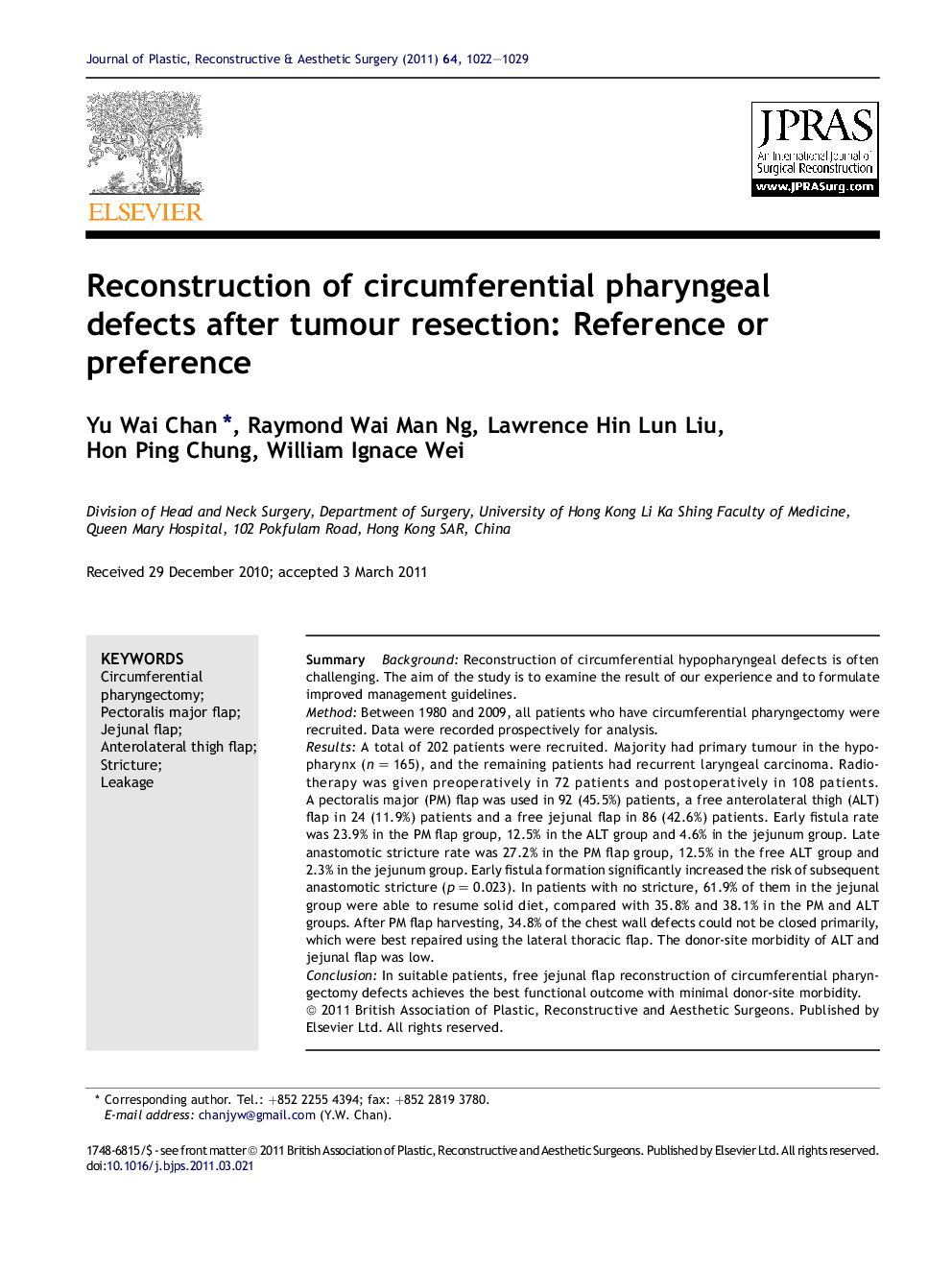| Article ID | Journal | Published Year | Pages | File Type |
|---|---|---|---|---|
| 4120665 | Journal of Plastic, Reconstructive & Aesthetic Surgery | 2011 | 7 Pages |
SummaryBackgroundReconstruction of circumferential hypopharyngeal defects is often challenging. The aim of the study is to examine the result of our experience and to formulate improved management guidelines.MethodBetween 1980 and 2009, all patients who have circumferential pharyngectomy were recruited. Data were recorded prospectively for analysis.ResultsA total of 202 patients were recruited. Majority had primary tumour in the hypopharynx (n = 165), and the remaining patients had recurrent laryngeal carcinoma. Radiotherapy was given preoperatively in 72 patients and postoperatively in 108 patients. A pectoralis major (PM) flap was used in 92 (45.5%) patients, a free anterolateral thigh (ALT) flap in 24 (11.9%) patients and a free jejunal flap in 86 (42.6%) patients. Early fistula rate was 23.9% in the PM flap group, 12.5% in the ALT group and 4.6% in the jejunum group. Late anastomotic stricture rate was 27.2% in the PM flap group, 12.5% in the free ALT group and 2.3% in the jejunum group. Early fistula formation significantly increased the risk of subsequent anastomotic stricture (p = 0.023). In patients with no stricture, 61.9% of them in the jejunal group were able to resume solid diet, compared with 35.8% and 38.1% in the PM and ALT groups. After PM flap harvesting, 34.8% of the chest wall defects could not be closed primarily, which were best repaired using the lateral thoracic flap. The donor-site morbidity of ALT and jejunal flap was low.ConclusionIn suitable patients, free jejunal flap reconstruction of circumferential pharyngectomy defects achieves the best functional outcome with minimal donor-site morbidity.
